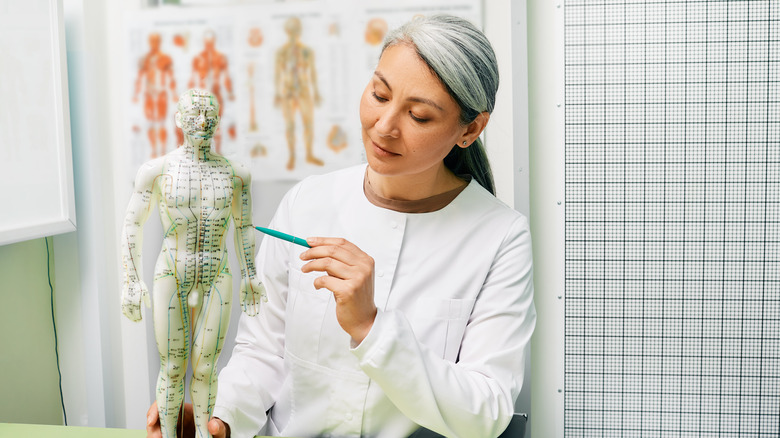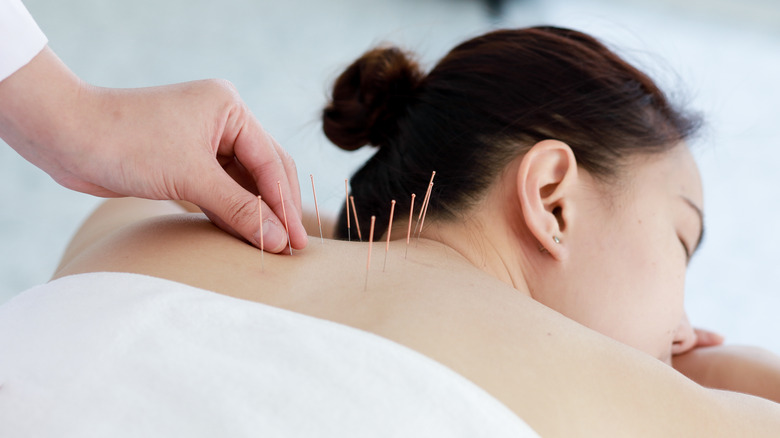What To Expect When You Go For Acupuncture
Acupuncture is a medical procedure that involves inserting thin, metallic needles through a patient's skin, as per Johns Hopkins Medicine. Once inserted, the needles are either moved in a specific way by the practitioner or they may be heated or electrically stimulated. It is a very old practice that has been utilized in traditional Chinese medicine (TCM) for about 3,000 years, according to an article published in the journal Global Advances in Health and Medicine.
Acupuncture is based upon the idea that the human body has over 2,000 acupuncture points connected by pathways called meridians (via Johns Hopkins Medicine). TCM practitioners believe energy, known as Qi, flows through these pathways and the disruption of this flow can cause disease. Positioning the needles at specific acupuncture points is believed to improve the flow of Qi and provide healing. However, WebMD noted that no one fully understands exactly how it actually works.
Nevertheless, experts at the UC San Diego School of Medicine reported that acupuncture is a safe and effective treatment for a variety of conditions. It is covered by a variety of insurance policies. People have theorized that it might boost the body's natural painkillers or help increase blood flow. Some claimed it's even helped them with their nausea or menstrual cramps as well as aided with fertility treatments, according to WebMD.
Acupuncture can appear to be a painful treatment
When you see an acupuncturist, they will likely ask you about your health history (via UC San Diego School of Medicine). They may also do a physical examination that includes looking at your tongue's color and shape and checking your pulse. This is done to assess what pattern of signs and symptoms you have. In other words, your treatment will be based on this pattern.
Once you receive an acupuncture treatment, you will be asked to lie on a treatment table while needles are inserted into the points determined by your acupuncturist. A typical treatment might include between five and 20 needles, according to the Mayo Clinic, and might take around 10 to 15 minutes.
Since the treatment involves needles, many people are afraid that it will hurt. However, UC San Diego School of Medicine reported that most people feel little to no discomfort. In fact, many reported feeling very relaxed during and after the treatment.


